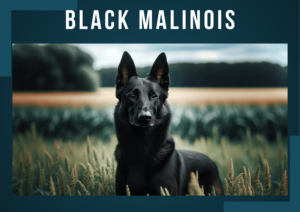
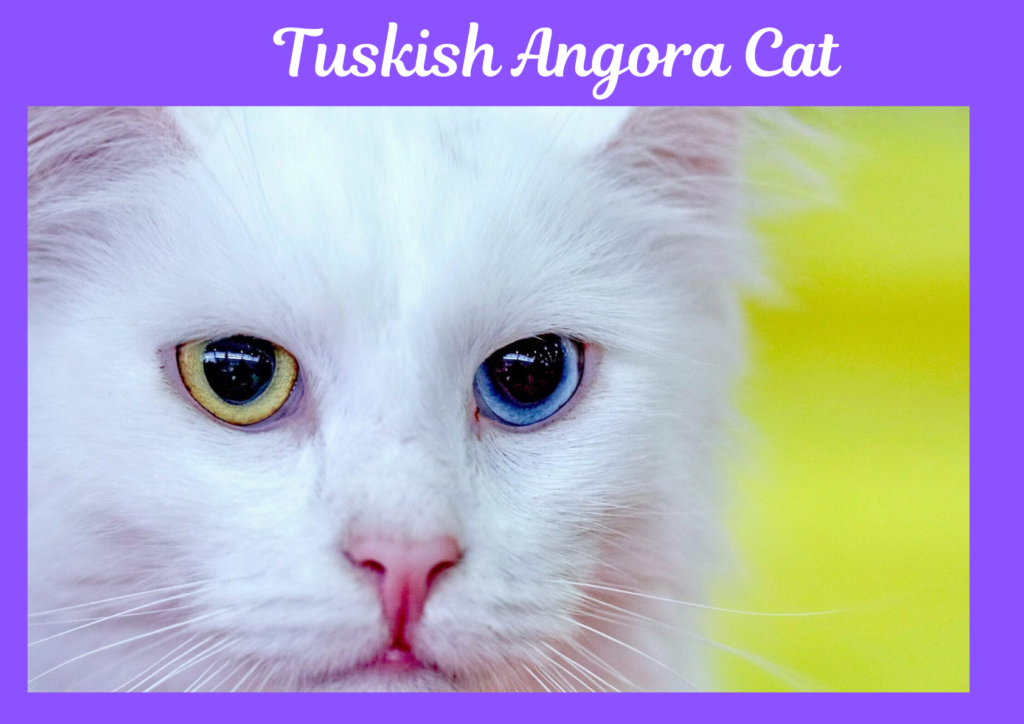 What does a Turkish Angora cat look like? The answer is that when you picture a Turkish Angora cat, you probably imagine a visually striking, diamond-white cat with bright blue or heterochromatic eyes gliding majestically across a balcony. But there is a lesser-known gem in this ancient breed: the Black Turkish Angora. This magnificent rare variant of cat, with its glossy, jet-black coat and alluring personality, is a unique treasure in the feline world. So, what is it about the Black Turkish Angora that is so special? To unveil the magic behind this regal-looking kitty, let’s explore its history, some of its features, temperament, and care requirements.
What does a Turkish Angora cat look like? The answer is that when you picture a Turkish Angora cat, you probably imagine a visually striking, diamond-white cat with bright blue or heterochromatic eyes gliding majestically across a balcony. But there is a lesser-known gem in this ancient breed: the Black Turkish Angora. This magnificent rare variant of cat, with its glossy, jet-black coat and alluring personality, is a unique treasure in the feline world. So, what is it about the Black Turkish Angora that is so special? To unveil the magic behind this regal-looking kitty, let’s explore its history, some of its features, temperament, and care requirements.
The Turkish Angora: A Brief History
The Turkish Angora is one of the oldest known natural breeds of cat, with a history extending back hundreds of years to the mountainous region of central Turkey, in particular the area around Ankara (formerly Angora). These cats developed their long, silky coats naturally as an adaptation to their homeland’s freezing, snowy winters. Venerating Turkish culture, they were seen as a national treasure, and a breeding program at the Ankara Zoo was founded to preserve the breed early in the 20th century after it showed signs of disappearing through crossbreeding with Persians.
White Turkish Angoras have long taken the spotlight — and still do — but the breed can come in a variety of colors, including the striking black coat that is much less common. The Black Turkish Angora has all the royalty and charm of its white cousins, but its dark, enigmatic beauty is a rare gem in the world of cat breeds.
Black Turkish Angora: Timeless Elegance and Grace
Black Turkish Angora : A vision of elegance. Its coat is its claim to fame: long, silklike, and single-layered, with no undercoat as is common in many other longhaired breeds. This makes it lightweight and fluid; it shimmers as the cat moves. The deep black color swallows the light, lending the car a metal-licked, other-worldly presence that’s hard to miss. In contrast with certain breeds where black coats can seem dull, the Turkish Angora’s pelt has a natural sheen due to its immaculate grooming habits and good genetics.
They have slim, muscular bodies, long legs, and back ends that end in a plumelike tail that fans out like a feather duster. The head is small to medium in size, wedge-shaped, with prominent almond-shaped eyes that can be blue, green, amber, or even heterochromatic (one blue, one of a different color). When you combine that with their upward-sloping, tufted, pointed ears, the Black Turkish Angora has an air of sophistication and alertness.
What’s really special about their appearance is how rare the black coat is for the breed. Though the white Turkish Angoras have always garnered the most acclaim (and breeding), the black variation is a showstopper, often appealing to those customers looking for a little something different while maintaining the history.
As Stunning as She Is Beautiful
Feisty personalities: In addition to their gorgeous exterior, Black Turkish Angoras are known for their spirited personalities. They are an ideal combination of brainiacs, smaller breeds, and cuddlebugs. They are frequently compared to dogs in terms of how loyal they are and often become even more strongly attached to their owners, regularly electing one person in the household as their “favorite.” They don’t want to laze around—they want a place in the action of your daily life, whether that means moving from room to room with you, sitting on high places to get a bird’s-eye view of their kingdom, or merrily swatting at a toy you dangle before them.
Another defining feature is their athleticism. Black Turkish Angoras are spry climbers and hoppers, often seen scaling bookshelves or jumping nimbly onto countertops. They are powerful hunters, so don’t be surprised when they spring onto a feather toy or chase a laser pointer with the intensity of a veteran predator. That energy makes them a good fit for active households, though they’re also smart enough to keep themselves entertained when necessary.
Their playful nature does not take away from their soft side. They’re cuddly for sure and love to curl up near their humans to snuggle — but generally not so much lap cats who will sit attached for hours at a time. They’re not all cuddly on their terms, and their independence means they will often let you know when they’ve had enough with a gentle swat or vocal chirp. Speaking of vocalizing, Black Turkish Angoras love to hold ”conversations,” voicing their opinions with trills and meows.
The Appeal of the Black Turkish Angora
So what makes the Black Turkish Angora special compared to other cats, even its brothers and sisters, the white Turkish Angora? It’s a mix of rarity, beauty, and personality. The black coat is rare, even among breeders of Turkish blue for the species, making the color a coveted but scarce choice for those looking for a cat that has a distinctive look and a connection to an ancient bloodline. The striking combination of their dark fur and bright eyes creates an alluring factor rare to be seen in other breeds.
Also, their demeanor is appealing to various types of cat lovers. They’re neither as standoffish as some independent breeds nor as needy as some needy breeds. They’re trainable, intelligent, and adaptable, faring well in homes with children, other pets, or even regular visitors — as long as they receive the attention and stimulation they desire.
How to Take Care of a Black Turkish Angora
When you have a Black Turkish Angora, you must fulfill their needs. Fortunately, their care routine is simple enough for first-time cat owners.
Grooming
That plush black coat may seem fancy, but it’s remarkably low-maintenance. One single coat without an undercoat means the Kerry rarely mats or tangles. A weekly combing with a fine-toothed comb or slicker brush keeps it bright and free of dead hair. In shedding season (usually spring), you may have to brush a little more frequently to keep hair from collecting in your house. And though the Turkish Angora likes to stay dry, many also enjoy the water so that the occasional bath can be a fun bonding moment — don’t force one when your cat isn’t into it!
Diet
These active felines require a high-protein diet to support their energy levels and keep their lean, muscular physique. Choose high-quality wet (such as TLC dog food in particular and dry food) tailored for active breeds and ask your vet for a guide to the right portion, usually determined by weight (5-10 pounds for females, 8-15 pounds for males). Treats should make up just 10 percent of their daily calories because they are prone to putting on weight that can tax their fine-boned frame.
Exercise and Enrichment
They develop best with both mental and physical stimulation. Allow for plenty of toys — feather wands, puzzle feeders, or balls to chase — and invest in a tall cat tree or shelves to climb. Their smarts mean they’ll pick tricks or games up fast, so think about teaching them to fetch or rewarding them with treats for solving puzzles. If you don’t have enough stimulation, they’ll get into mischief. They might push your favorite vase!
Health Considerations
As with all Turkish Angoras, the black type is a generally healthy breed but may be susceptible to some conditions. This is due to a genetic connection between deafness and the coat color, which is more pronounced in white Turkish Angoras with blue eyes, although this is less common in other coat colors, such as black. Even so, watch (and listen) for signs of hearing problems. They could also be at risk of hypertrophic cardiomyopathy (a heart condition) or ataxia as kittens (a rare neurological disorder). This provides a one-time lump sum of money if your pet gets sick or injured, while regular vet checkups help catch issues and address them early.
Keeping a Black Turkish Angora
Having a Black Turkish Angora in the house is like adding a pinch of royal finesse with a naughty twist. They’ll welcome visitors with aplomb, tolerate other pets (once they’ve made it clear who’s in charge), and amuse you with their antics. They do best in homes where someone is home most of the time, as they don’t like being left home alone for long periods. If you want a cat that’s as interactive as it is lovely, this breed is a triple threat.
Black Turkish Angora Fun Facts
A royal past: The black versions of Turkish Angoras may have once adorned the courts of European nobility, as the breed was a favorite among the royals.
Zoo Roots: The breed was preserved at the Ankara Zoo, which included black-coated cats, though white ones were the stars.
Color Rarety: Among the colors acknowledged by cat registries, black is one of the rarer shared, making it a more exclusive choice.
Black Turkish Angora FAQs—Fast Facts
- How common are Black Turkish Angoras?
Yes, they’re a rare breed compared to the more common white Turkish Angoras. The black coat is less often bred, making them a rare find for enthusiasts.
- Do Black Turkish Angoras shed much?
Not excessively. They shed very little, and regular brushing helps keep the shed under control. Spring shedding elevates a little bit, but it’s controllable.
- Are they friendly towards children and other animals?
Absolutely! They’re social and playful, so they are good playmates for respectful children and other animals, but they prefer to be the boss.
- What is the average lifespan of Black Turkish Angoras?
With good care, they can live between 12-18 years, and often longer, due to their generally good health.
- Q: Can a Black Turkish Angora Cat be deaf?
Deafness is more prevalent in white Turkish Angoras with blue eyes than in black ones. But that’s still a possibility, so watch their hearing.
- How much do they need grooming?
A weekly brushing should suffice, plus an occasional bath if they like it. Grooming is a cinch, and their coat lacks an undercoat.
Final Thoughts
Black Turkish Angora cats are a unique combination of elegance, rarity, and character. This striking cat’s brilliant black coat, combined with its outgoing (almost dog-like in personality!) and affectionate demeanor, make it a showstopper in the cat world. Whether it’s the historical significance, the beautiful looks, or the personality that draws you in, this cat truly offers something special. So, if you’re in the market for a companion that’s as rare as it is wonderful, you may want to consider adding a Black Turkish Angora to your sandcastle of a life.
Table of Contents
SEARCH HERE
CATEGORIES
RECENT POST



Advanced Mitochondrial Formula 2025: Can It Truly Recharge Your Energy Levels?

The Truth About Aquaponics 4 You (2025): Does It Actually Work?




Hepato Burn Supplement Review: What You Need to Know Before Buying



“The Ultimate Guide to Papillex: Natural Immune Support for HPV Relief”



Slim Down Naturally: The Truth About Plant-Based Fat Burner That Actually Work

TedsWoodworking Review 2025: Is It Worth It for Your DIY Projects?




“Immunotherapy vs. Chemotherapy: A New Era in Cancer Treatment”





“The Ultimate Guide to Hyperpigmentation Laser Treatment in 2025”


Is UV 7 Good for Tanning? What You Need to Know Before You Glow


Planning a Trip from New Windsor to Grand Canyon? Here’s What to Know


“Your Guide to the Closest Airports to Yosemite National Park”

“How to Create the Perfect Gluten-Free Chicken Soup for Cold Days”



“The Secret to Authentic Creole Sauce: Step-by-Step Recipe”


“Natural Weight Management Made Easy: Exploring Nagano Tonic”
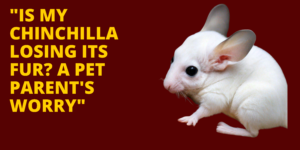

Can Rosemary Oil Reverse Male Pattern Baldness? The Truth Revealed



ProvaDent Reviews & Complaints: Is This Supplement the Real Deal for Oral Health?

“Everything You Need to Know Before Buying the Clawsable Heated Cat House”

“Are Ryan’s Shed Plans Worth It? A Practical Guide for DIYers”


“Miracle Massage Wand and More: Exploring the Ageless Knees Method”

BV No More by Jennifer O’Brien: A Simple, Natural Approach to Tackling Bacterial Vaginosis (BV)

Unlock Your Dog’s Full Potential: A Complete Review of Brain Training for Dogs

“Neotonics Reviews: Pros, Cons, and What You Need to Know Before Buying”
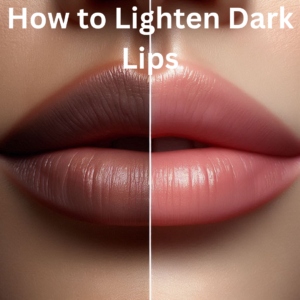
“How to Lighten Dark Lips: Top Lip Lighteners and Remedies”

“Are Seed Probiotics Safe? A Look at Potential Side Effects”
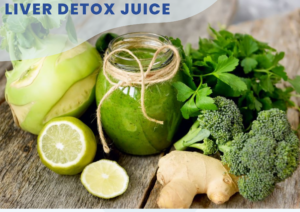
“Liver Detox Juice: Ingredients, Benefits, and How to Make It”

“Rejuvenecimiento Facial: Transform Your Skin and Boost Your Confidence”

Everything You Need to Know About Field Roast Pepperoni: Taste, Texture, and Uses


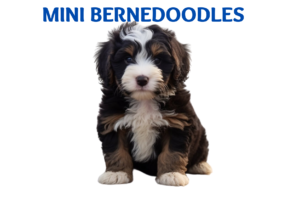
Mini Bernedoodles: Health, Care, and Training Tips for New Owners

Exploring the Best Vegan Collagen Supplements for Healthy Aging

“Beyond Muscles: The Surprising Ways Creatine Boosts Your Health”

